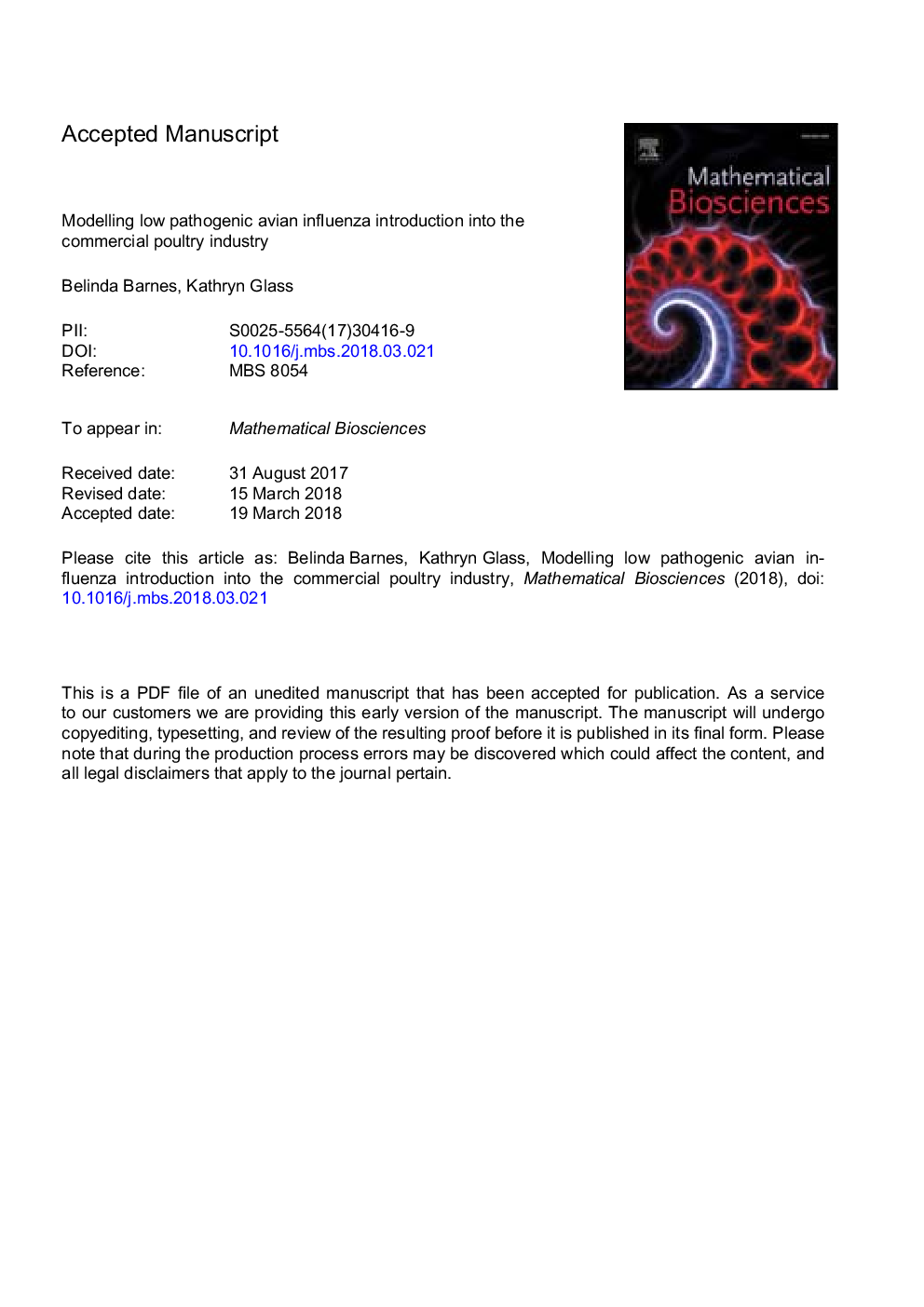| Article ID | Journal | Published Year | Pages | File Type |
|---|---|---|---|---|
| 8877020 | Mathematical Biosciences | 2018 | 18 Pages |
Abstract
Outbreaks of highly pathogenic avian influenza (HPAI) in commercial poultry flocks are rare but highly disruptive to the industry. There is evidence that low pathogenic avian influenza (LPAI) can transfer from wild birds to domestic flocks, where it may mutate to HPAI, and the industry is concerned that an increasing demand for free-range produce may affect the risk of LPAI and HPAI outbreaks. In this paper we focus on LPAI introduction and establishment, and formulate a branching process model to compare risk between sectors and their contribution to overall industry-level risk. Our aim is to determine how heterogeneity in avian influenza viruses and the distinct population structures of each sector - caged, barn and free-range, meat and layer - interact with a continuous risk of virus introduction to affect outbreak probabilities. We show that free-range access is the most influential driver of LPAI outbreaks, with production cycle length having relatively little effect. We demonstrate that variation in virus transmission rates is particularly important when modelling avian influenza introduction to domestic poultry. Virus-free status is of interest for biosecurity and we distinguish how it differs from the usual probability of extinction, and discuss how production cycle length affects this difference. We also use the nonlinear relationship between shed size and risk to identify conditions for which shed size is most influential.
Related Topics
Life Sciences
Agricultural and Biological Sciences
Agricultural and Biological Sciences (General)
Authors
Belinda Barnes, Kathryn Glass,
